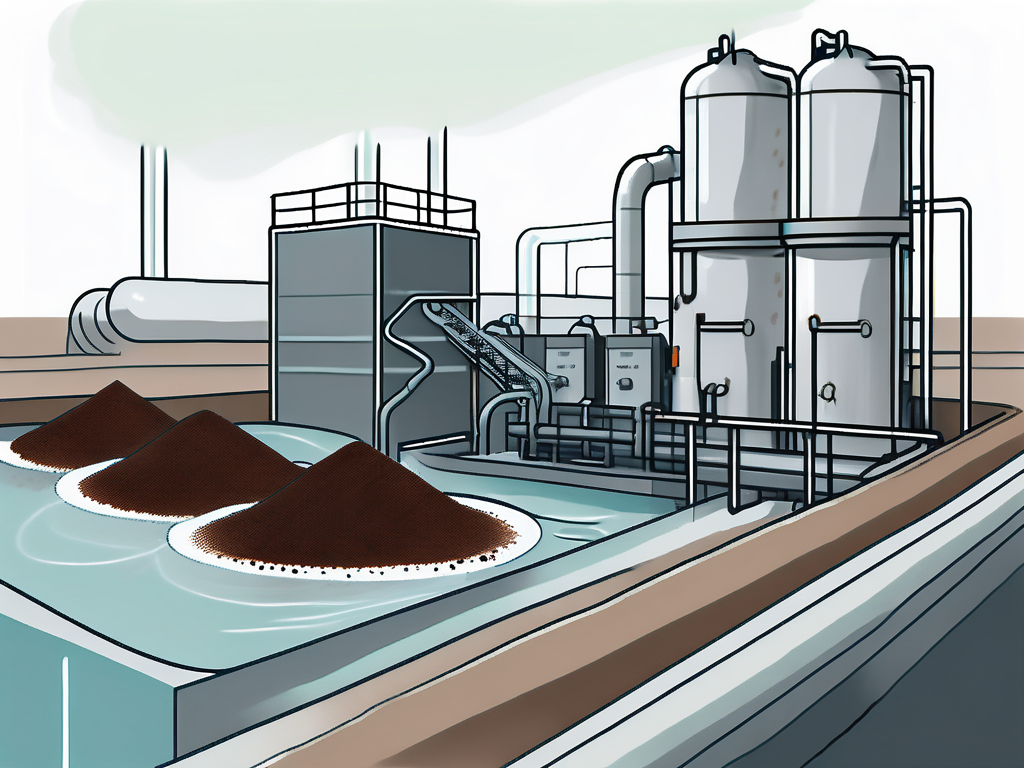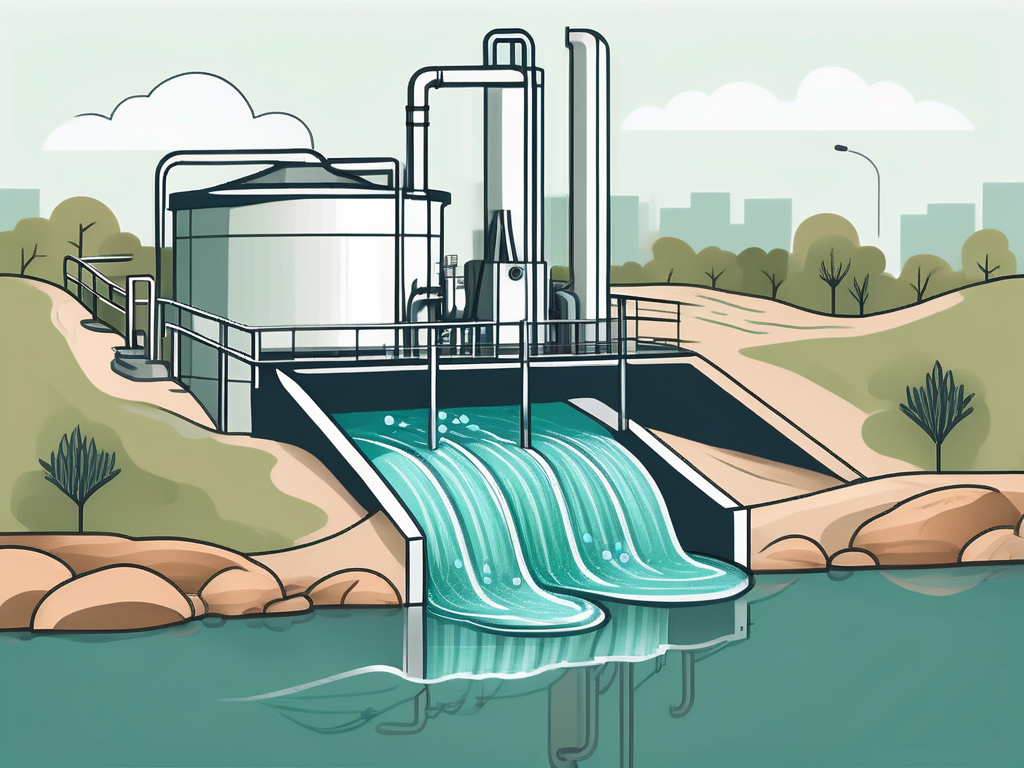
Wast: Wastewater Treatment Explained
Wastewater treatment is a complex, multi-step process that involves the removal of contaminants from wastewater, or sewage, to produce an effluent that can be returned safely to the water cycle with minimal environmental impact. This glossary article will delve into the intricate details of wastewater treatment, explaining the various steps, technologies, and terminologies associated with this crucial environmental process.
Understanding wastewater treatment is not just for engineers or environmental scientists. It's important for everyone, as it directly impacts the health of our communities and the sustainability of our planet. This glossary will provide a comprehensive understanding of the process, its components, and its significance.
Introduction to Wastewater Treatment
Wastewater treatment is a process that involves the removal of physical, chemical, and biological contaminants from wastewater. The goal is to produce an effluent, or treated water, that can be safely discharged back into the environment, and a solid waste or sludge suitable for disposal or reuse.
Wastewater treatment is crucial for protecting public health and the environment. Untreated or improperly treated wastewater can contain harmful bacteria, viruses, and chemicals that can cause disease, damage ecosystems, and contaminate water sources. By treating wastewater, we can prevent these negative impacts and ensure the sustainability of our water resources.
Types of Wastewater
There are several types of wastewater, each requiring different treatment methods. The three main types are municipal wastewater, industrial wastewater, and stormwater runoff. Municipal wastewater comes from homes, businesses, and public facilities and typically contains human waste, food scraps, oils, soaps, and other household waste. Industrial wastewater comes from manufacturing and industrial processes and can contain a wide range of pollutants, depending on the industry. Stormwater runoff is rainwater that runs off impervious surfaces like roads and rooftops, picking up pollutants along the way.
Each type of wastewater has different treatment requirements. Municipal wastewater, for example, requires primary, secondary, and sometimes tertiary treatment to remove solids, organic matter, and nutrients. Industrial wastewater often requires specialized treatment to remove specific pollutants, while stormwater runoff may be treated through natural processes in wetlands or detention ponds.
Stages of Wastewater Treatment
Wastewater treatment typically involves three stages: primary, secondary, and tertiary treatment. Each stage involves different processes and technologies designed to remove specific types of contaminants.
Primary treatment involves the removal of large solids and grit from the wastewater through screening and sedimentation. Secondary treatment involves biological processes to remove dissolved organic matter, while tertiary treatment involves advanced processes to remove nutrients and disinfect the water. Each of these stages will be discussed in more detail below.
Primary Treatment
Primary treatment is the first stage of wastewater treatment and involves the removal of large solids and grit from the wastewater. This is typically achieved through screening and sedimentation. Screening involves passing the wastewater through screens to remove large objects like rags, sticks, and plastic items. Sedimentation involves allowing the wastewater to sit in a tank or basin so that heavy solids can settle to the bottom, where they can be removed.
The goal of primary treatment is to prepare the wastewater for the next stage of treatment by removing large solids that could interfere with subsequent processes. The solids removed during primary treatment are typically disposed of in a landfill or incinerated, although some may be processed further for use as fertilizer or other products.
Secondary Treatment
Secondary treatment is the second stage of wastewater treatment and involves biological processes to remove dissolved organic matter from the wastewater. This is typically achieved through aeration and the use of microorganisms. Aeration involves adding air to the wastewater to encourage the growth of aerobic bacteria, which consume the organic matter in the wastewater. The bacteria and organic matter form a sludge that can be removed through sedimentation.
The goal of secondary treatment is to remove organic matter that can deplete oxygen levels in water bodies, leading to the death of fish and other aquatic life. The sludge produced during secondary treatment is typically processed further to stabilize it and reduce its volume, after which it can be disposed of or used as a soil conditioner.
Tertiary Treatment
Tertiary treatment is the final stage of wastewater treatment and involves advanced processes to remove nutrients like nitrogen and phosphorus and disinfect the water. Nutrient removal is typically achieved through biological or chemical processes, while disinfection is achieved through chlorination, ultraviolet light, or other methods.
The goal of tertiary treatment is to produce an effluent that is safe to discharge into the environment. Nutrient removal is important because excess nutrients can cause algal blooms that deplete oxygen levels in water bodies, while disinfection is important to kill any remaining pathogens in the water. The effluent produced during tertiary treatment is typically discharged into a river, lake, or ocean, or it may be reused for irrigation or other non-potable uses.
Sludge Treatment
Sludge treatment is an important part of wastewater treatment. The sludge produced during primary and secondary treatment contains a high concentration of organic matter and pathogens, and it must be treated before it can be disposed of or reused. Sludge treatment typically involves stabilization, dewatering, and sometimes further processing to produce a product that can be used as a soil conditioner or fertilizer.

Stabilization involves reducing the organic matter and pathogens in the sludge through digestion or composting. Digestion involves the use of anaerobic bacteria to break down the organic matter, while composting involves the use of aerobic bacteria. Dewatering involves removing water from the sludge to reduce its volume and make it easier to handle. Further processing may involve heat treatment, pelletizing, or other methods to produce a product that can be used as a soil conditioner or fertilizer.
Sludge Digestion
Sludge digestion is a process that uses anaerobic bacteria to break down the organic matter in the sludge. This process reduces the volume of the sludge and produces biogas, a renewable energy source that can be used to power the wastewater treatment plant or sold to the grid. The digested sludge is typically dewatered and then disposed of in a landfill or used as a soil conditioner.
There are two types of sludge digestion: mesophilic and thermophilic. Mesophilic digestion occurs at temperatures between 30 and 38 degrees Celsius and takes about 15 to 20 days. Thermophilic digestion occurs at temperatures between 49 and 57 degrees Celsius and takes about 10 to 15 days. Thermophilic digestion is faster and produces a higher quality end product, but it requires more energy and is more complex to operate.
Sludge Composting
Sludge composting is a process that uses aerobic bacteria to break down the organic matter in the sludge. This process reduces the volume of the sludge and produces a compost that can be used as a soil conditioner. The composted sludge is typically screened to remove any large particles and then sold or given away for use in gardening or agriculture.
There are several methods of sludge composting, including windrow composting, in-vessel composting, and aerated static pile composting. Windrow composting involves placing the sludge in long, narrow piles and turning it regularly to maintain aerobic conditions. In-vessel composting involves placing the sludge in a container and controlling the temperature, moisture, and aeration. Aerated static pile composting involves placing the sludge on a perforated pipe system and forcing air through the pile to maintain aerobic conditions.
Wastewater Treatment Technologies
There are many different technologies used in wastewater treatment, ranging from simple physical processes to complex biological and chemical processes. These technologies are typically used in combination to achieve the desired level of treatment. Some of the most common wastewater treatment technologies include screening, sedimentation, aeration, biological treatment, chemical treatment, and disinfection.
Screening and sedimentation are physical processes used to remove large solids and grit from the wastewater. Aeration and biological treatment are biological processes used to remove organic matter and nutrients from the wastewater. Chemical treatment involves the use of chemicals to remove specific pollutants, while disinfection involves the use of chemicals, ultraviolet light, or other methods to kill pathogens in the water.
Screening and Sedimentation
Screening and sedimentation are two of the most basic wastewater treatment technologies. Screening involves passing the wastewater through screens to remove large objects like rags, sticks, and plastic items. Sedimentation involves allowing the wastewater to sit in a tank or basin so that heavy solids can settle to the bottom, where they can be removed.
Screening and sedimentation are typically used in the primary treatment stage of wastewater treatment. They are simple, low-cost technologies that can effectively remove a significant amount of solids from the wastewater. However, they are not effective at removing dissolved organic matter or nutrients, which require more advanced treatment technologies.
Aeration and Biological Treatment
Aeration and biological treatment are key technologies used in the secondary treatment stage of wastewater treatment. Aeration involves adding air to the wastewater to encourage the growth of aerobic bacteria, which consume the organic matter in the wastewater. Biological treatment involves the use of microorganisms to remove organic matter and nutrients from the wastewater.
Aeration and biological treatment are more complex and costly than screening and sedimentation, but they are essential for removing dissolved organic matter and nutrients from the wastewater. These technologies require careful control of conditions like temperature, pH, and oxygen levels to ensure the optimal growth and activity of the microorganisms.
Chemical Treatment and Disinfection
Chemical treatment and disinfection are advanced technologies used in the tertiary treatment stage of wastewater treatment. Chemical treatment involves the use of chemicals to remove specific pollutants from the wastewater, while disinfection involves the use of chemicals, ultraviolet light, or other methods to kill pathogens in the water.
Chemical treatment and disinfection are typically used to treat industrial wastewater or to produce a high-quality effluent that can be reused for irrigation or other non-potable uses. These technologies are more complex and costly than aeration and biological treatment, but they are essential for ensuring the safety and sustainability of our water resources.
Conclusion
Wastewater treatment is a complex, multi-step process that involves the removal of physical, chemical, and biological contaminants from wastewater to produce an effluent that can be safely returned to the water cycle. This process is crucial for protecting public health and the environment, and it requires a wide range of technologies and expertise.

This glossary has provided a comprehensive overview of wastewater treatment, including the different types of wastewater, the stages of treatment, the treatment of sludge, and the various treatment technologies. By understanding these concepts, we can better appreciate the importance of wastewater treatment and the challenges involved in managing our water resources sustainably.



